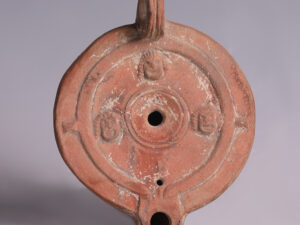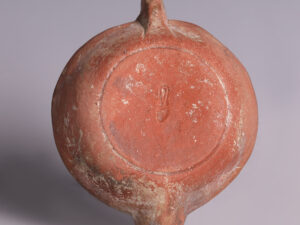In Antiquity, a lamp was originally called a lychnus, from the Greek λυχνος, with the oldest Roman lamps dating back to the third century BC. During the Roman Empire, it became commonplace to use lamps in funeral ceremonies and for public purposes. The vast trade networks set with the expansion of the Roman Empire allowed this item to be spread across Europe, Eastern Asia and Northern Africa, which led to the development of several provincial variations.
The Cabiri, or Kabiri, were chthonic deities, associated with sailors and fertility. Their worship was centred on a mystery cult, associated with Hephaestus and focused around the Greek, north Aegean islands. Their origin was unknown but a possible Phrygian or Semitic inception has been suggested. They were represented usually in pairs; a male group, a father and son known as Axiocersus and Cadmilus. A less-important female pair, Axierus and Axiocersa, were also associated with the cult. Axiocersus and Cadmilus were depicted as they are here, as bearded men, wearing phrygian caps with stars or crosses. They are often confused with depictions of the Dioscuri, who are similarly portrayed and associated with stars.
The maker’s mark LMVNSVC refers to a prolific workshop with Italic origin and North African branches. Their prolific period of manufacture was from the Flavian period, beginning with the Emperor Vespasian, to the Trajan period.
To discover more about oil lamps in Antiquity, please visit our relevant blog post: Lighting The Way.






















